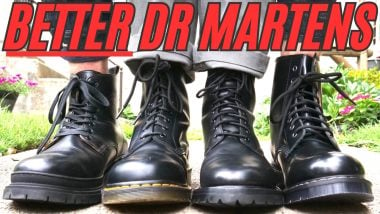Why Hand Welted Boots are Better Than Goodyear Welted
The term “Goodyear welted” is often used as a mark of quality for men’s boots. In fact, people quite often will not even consider buying a pair of boots if they are not Goodyear welted.
In some ways, this is prudent. For entry level boots (less than $200), you will often find boots that are made of cemented construction, which is objectively worse than Goodyear welted boots. Cemented boots have their uppers and soles connected and held together by adhesives like glue, with no actual stitching holding anything together. This means they are not durable, and once the sole disconnects or wears down, the boots need to be thrown away.
Goodyear welted boots are more securely constructed, are more durable, and can be resoled. However, just because Goodyear welted boots are better than cemented boots does not mean they are automatically the best and in reality, they were never the gold standard.
Editor’s note: This article is an op-ed. The views expressed herein and in the video are the author’s and don’t necessarily reflect the views of Stridewise, LLC. Claims, assertions, opinions, and quotes have been sourced exclusively by the author.
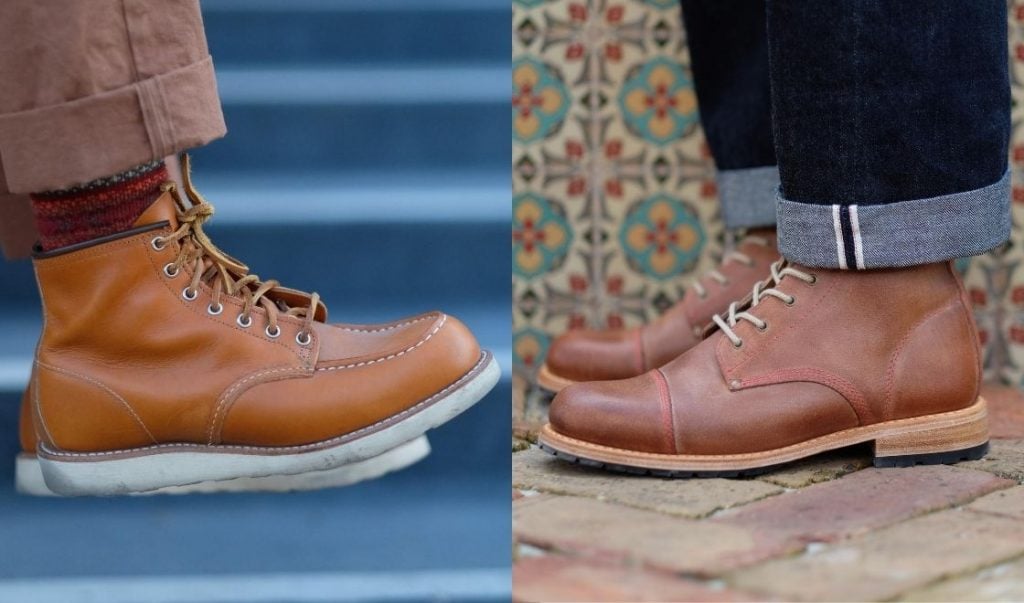
Why Pick a Goodyear Welt?
Many people assume that Goodyear welted construction is the ultimate form of construction for shoes and boots, but this is not true. In fact, the process by which Goodyear welted boots are made is a sped up, lower quality version of the actual ultimate form of construction: handsewn welted construction. (Also called a hand welt or handwelt.)
In fairness, it is not surprising that people think the GYW reigns supreme. I certainly used to think it made the ultimate and most durable boot possible. This is largely in part due to the advertising of brands that make Goodyear welted products, especially brands such as Red Wing.
The way these brands describe their boots, you would think Goodyear welting is to boots what composite armor and a sloped front is to tanks, or what a shield is to a knight. So that’s what a lot of people end up thinking, and then they tell other people that Goodyear welted is the best and then the myth continues to be perpetuated.
To be clear, Goodyear welted shoes and boots are not bad. They can be quite excellent, and many high end and expensive brands use this method of production. There are other methods of construction such as stitchdown, Blake, Blake rapid, and Norwegian (a modified version of hand welt or Goodyear welt), and I would say that these are roughly equal. But what is objectively better than Goodyear welting is hand sewn welting.
To understand why hand sewn welted construction is superior to Goodyear welted construction, we will have to discuss exactly what is involved in each construction method to get a full understanding. We will start with Goodyear welted construction because it is what more people will be familiar with.
[Related: Top Grain’s Better Than Full Grain and More Leather Myth Busting]
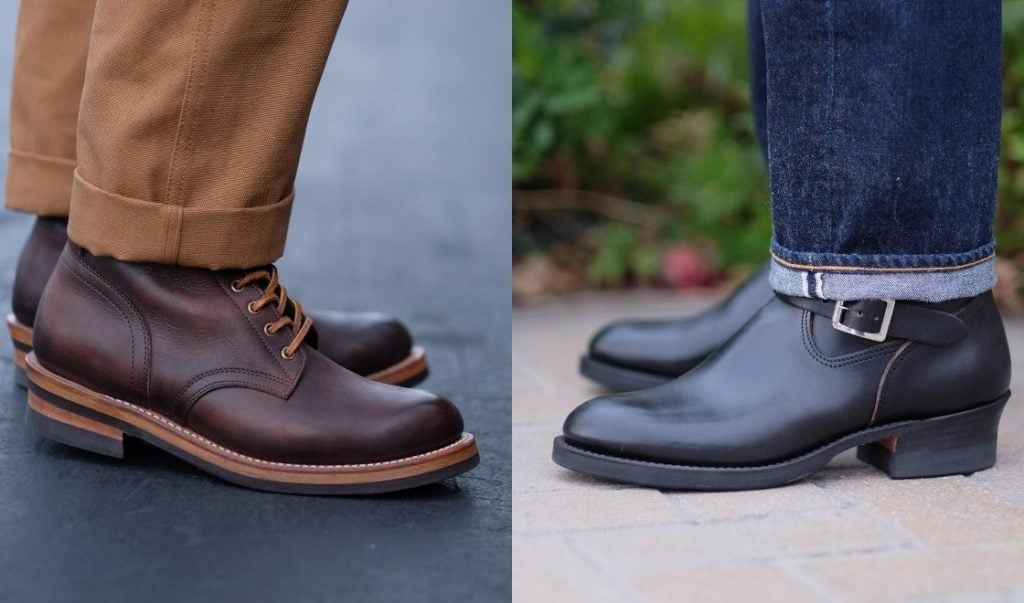
How to Make a Goodyear Welt
With any boot, perhaps the most critical aspect of construction is connecting the upper to the bottom/sole of the boot.
In a Goodyear welted shoe or boot, this is done by
- attaching a canvas/fabric rib to the bottom of the insole leather with glue (this is known as gemming),
- using a machine to stitch that to a piece of leather (which is the actual welt),
- then, the welt is stitched by machine to the midsole/outsole of the shoe or boot.

How to Make a Hand Sewn Welt
With hand sewn welt construction,
- the bootmaker cuts a channel in the bottom of the leather insole by hand,
- then sews the leather welt on by hand using a lock stitch method. (Lock stitching means the rest of the stitches will survive if one breaks.)
- This welt is then sewn to the midsole/outsole of the boot.
Seemingly, this is an extremely similar process and in many ways it is. However, there are key differences.
Goodyear Welt vs Hand Welt
There are a few areas to look at here.
The Canvas Rib
In the first place, the canvas rib is just that: canvas. It is only fabric. While technically fairly durable, at the end of the day, glue and fabric attaching the welt to the insole of the boot is not the most durable method possible. But it is quick and efficient and mostly involves machine work.
The Price
The benefits of Goodyear welting vs. hand sewn welting is that it is quicker, cheaper, and easier while also still being high quality overall and resoleable. This means that the price of a good quality pair of boots can come down significantly while still being durable and resoleable over time, making them more accessible to people. Before this speedier process was invented, shoes and boots were all made by hand and therefore, quite expensive. This meant that they were more difficult to obtain, so Goodyear welting allows more people to buy more boots.

The Insole and Midsole
There are several more benefits that hand sewn welting has over Goodyear welting, however. Firstly, hand sewn welted boots and shoes will have thicker insoles than Goodyear welted ones in general. This is largely due to the fact that the maker needs to cut part of the leather at the bottom to create the channel, thus necessitating thicker leather. The main benefit of this is that the person wearing the boots has more leather in the insole, meaning that they have more support and more material to mold and conform to their feet.
Going along with this benefit is the fact that a hand welted boot has less space in between the insole and midsole that needs to be filled. The leather channel is not as tall as a canvas rib is, so there is less open space that needs to be filled with cork or… nothing.
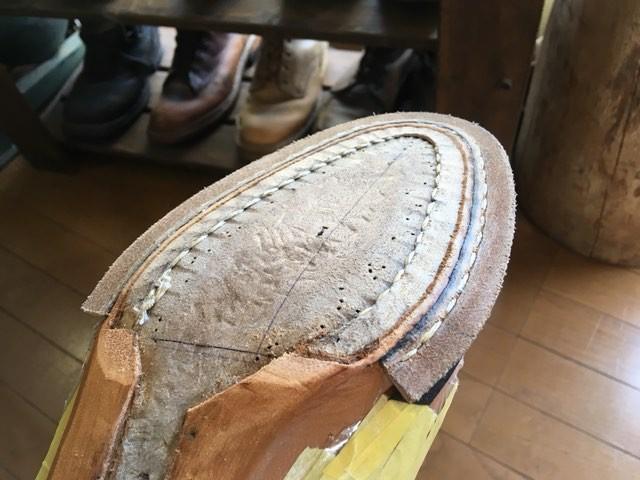
If you look at the cross section of Goodyear welted footwear, you often see cork in between the insole and midsole, but you also see a lot of empty space. Additionally, some brands tout cork as this great material that conforms to your foot, but in reality, cork is not as good at truly conforming to and supporting your feet as leather is. It is not a bad material, but it is inferior to leather.

The Comfort
Add these two benefits together and a hand sewn welted boot has more leather supporting your feet while Goodyear welted boots have less leather, more cork, and more empty space supporting your feet. This should lead to a more comfortable boot. Now, to be clear, I am someone who has said for years that comfort is subjective and I still stand by this belief. Also, I am someone who finds poron or any synthetic insoles to be inferior in terms of comfort and support than leather so please keep that in mind. However, this evidence shows how in theory, a pair of hand sewn welted boots should support your feet better.
In my personal experience, this is exactly the case. My top four most comfortable boots in order are my White Klouds, my two pairs of Clinch engineers, and my Role Club engineers. All of these boots are hand welted. Correlation does not equal causation in all cases. These four boots are also my most expensive boots. Then again, part of the reason they’re my most expensive boots is because they are hand welted and because they use more expensive materials.
On the other hand, as of now my next most comfortable boots are my John Lofgren Engineers, and those are Goodyear welted. I have other hand welted boots, but I have not owned them long enough to adequately be able to judge how comfortable they are. In theory at least, hand welted boots should generally be more comfortable and have more leather in between your feet and the ground than most Goodyear welted boots.
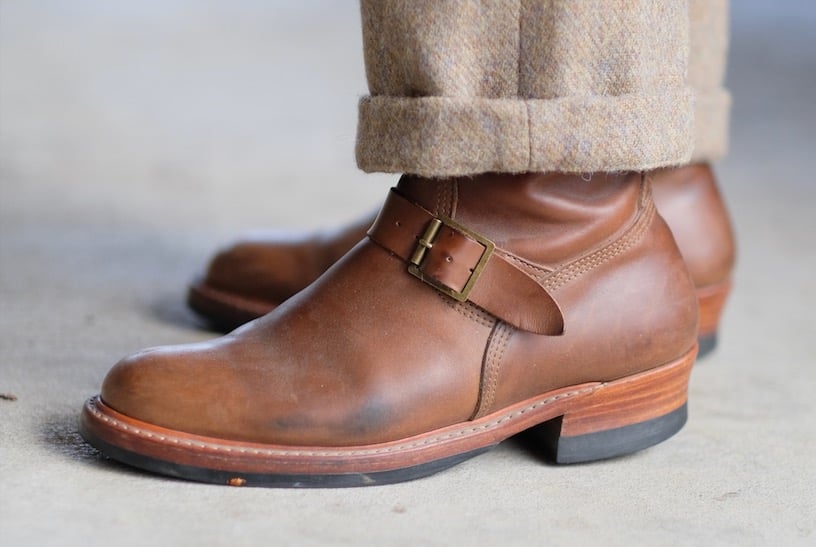
The Durability
Another benefit of hand sewn welted boots is the fact that technically, they are more durable.
As mentioned before, a canvas rib and glue holding your boots together is not as strong as thick leather holding your boots together. They should survive more resoles and should be less prone to any failures than a pair of boots with a canvas rib.
In real life, Goodyear welted boots seem to be more than adequate for the average person. Let’s be honest, here: most of us who wear boots do not really need to wear them. We wear them because we like them and we own or want to own multiple pairs. Many of us end up growing collections large enough that we hardly end up breaking in many of our boots.
This means that for most people who wear boots casually, a well made Goodyear welted pair of boots should last them their whole life, and that’s if we don’t sell them first. Personally, I have not seen specific tests showing how long different boots made from different construction methods last, but the variables certainly go well beyond just the type of construction method used. It is difficult to argue that canvas and glue are as durable as hand cut leather, but it is also difficult to argue that this really matters in terms of durability for most people. Still, if you want that extra durability and peace of mind, then hand welted boots are for you.
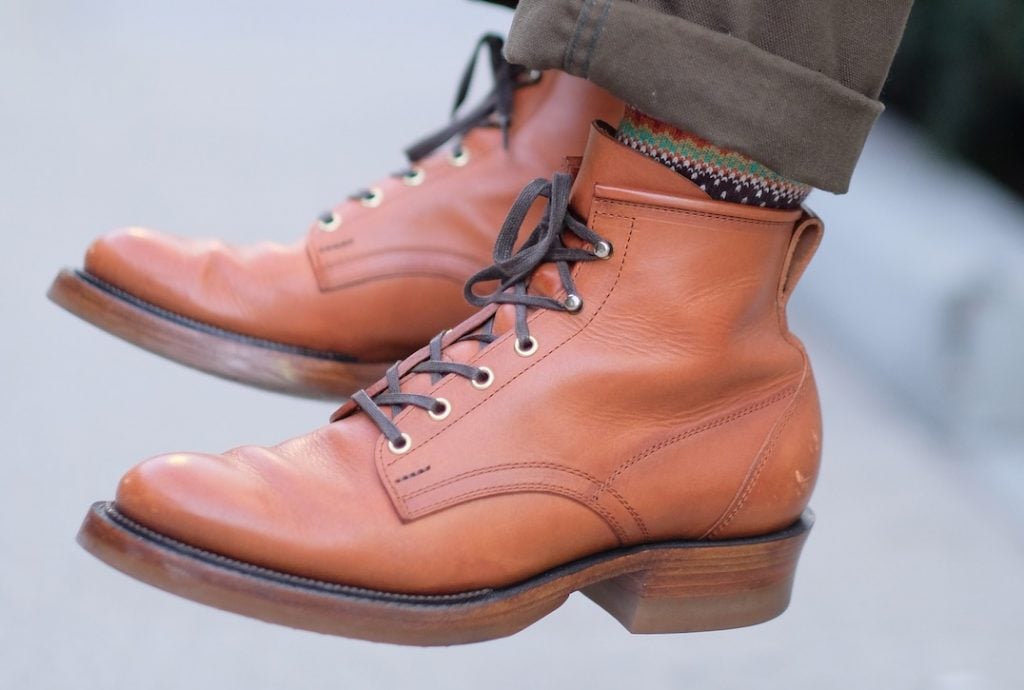
The Craftmanship
The last major benefit of hand sewn welted boots over Goodyear welted boots in my opinion is the least tangible one, but also is the most important to me personally.
Goodyear welt construction is certainly a high quality method of constructing shoes and boots, being relatively water resistant, durable, and allowing for resoles.
However, this process was born out of industrialization and mass production, and if you are a fan of quality footwear and clothing, you will know that mass production is antithetical to true craftsmanship and quality.
Hand welted boots take more time, dedication, and skill to make. This is undeniable. It is not something that is easy to do and especially to do it well. It also takes a significantly longer time than Goodyear welting does. Goodyear welting can be done in seconds.
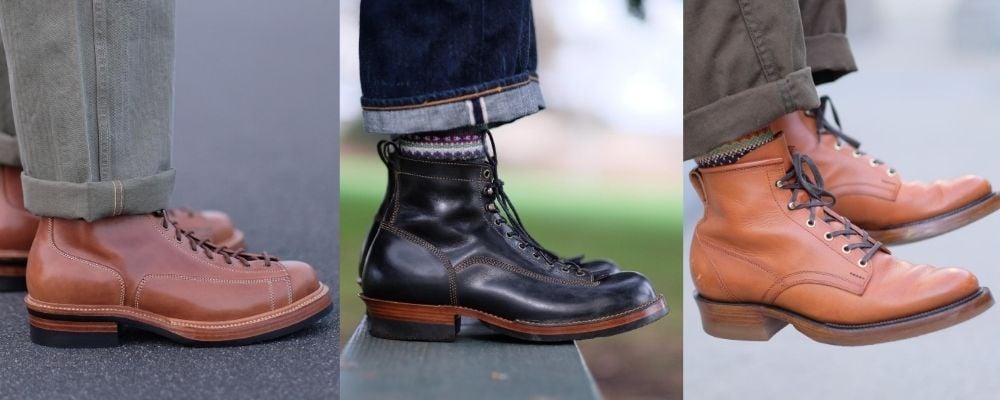
Peng from Flame Panda (a small company based in rural China) says that his hand welting process takes 2-5 hours in total with his hand sewn outsoles. This would mean at least an hour for just the hand welting. Rizky from Onderhoud Handmade told me that it takes 1-2 hours just for the stitching. Show Goto of White Kloud told me that his hand welting process takes 2 hours.
Compare this to how long it takes to the gemming process in Goodyear welts. You can see this on Youtube videos, where people stitch the welt to the canvas rib in seconds. This extra time not only to make the boots this way, but the time to learn this craft shows dedication and that is what truly draws me to hand welted boots.
This is why people who own hand welted boots find it funny when people make the excuse that brands such as Red Wing, Wolverine, or Thursday boots’ flaws are there because they are “hand made.” With these brands, much of the construction involves machines. Actual handmade boots are much more cleanly constructed.
Look at Show Goto from White Kloud. He makes the best casual boots in the world and it’s because he goes above and beyond to do everything at the very highest level. For example, he actually makes the thread he uses for his hand welting by hand himself. He gets the raw materials including hemp yarns, boar hair, and beeswax, and actually creates the thread himself. Is this really necessary? Probably not. Is it a beautiful example of a dedicated craftsman doing everything he can to make the absolute best product he can? Yes. I find value in this extra effort and craftsmanship.

Why are the boots that are hand sewn welted all come out of tiny shops run by one man, one family, or a tiny group of craftsmen? Many of the makers who create boots with this old, traditional method are choosing to do this despite it being inefficient. They are choosing quality over quantity and skill over speed. Even Brass Tokyo, the largest of the hand welted makers I know of, is still a small shop and when I went to pick up my boots in 2017, they said that only one person was doing the actual hand welting on their boots.
I really love that most of these smaller shops and one person makers are so dedicated to making everything as well as they possibly can and always improving their skills. Ironically, it is these makers who respond positively and humbly to constructive criticism while larger brands get defensive when anyone criticizes anything about their boots.
These makers have a closer connection to the boots they make by doing this process. It is a more artful process and the boots are more special as a result, in my opinion. As I mentioned before, most of us wear boots because we like them and we want to find the coolest, most beautiful, and best made boots we can find. Many of our purchases go well beyond the point of diminishing returns and we are OK with that because we appreciate that a great pair of boots is more than the sum of their parts.

Sometimes we want something that is beautiful and well made just for the sake of it being beautiful and well made. My Freewheelers leather jackets have a lot of extra ornate stitching on them. It is often structurally unnecessary, but it looks beautiful and I feel like they do it just to show off that they stitch leather jackets better than anyone in the world. This is part of why I love them. The beauty is just for the sake of itself. For some people, this is completely pointless, but for others, this is part of why we like to buy nice boots and clothes.
Having great raw denim jeans that fade nicely does not make them more durable or more practical in any way in comparison to other pairs of jeans. In fact, the crocking makes them less practical, if anything. Still, we wear them anyway because the way they fade is beautiful unto itself. Like I said, there are tangible reasons for preferring hand welted boots over Goodyear welted ones, but this is the reason I connect with the most.
Are All Hand Welted Boot Made Equally?
To be fair, even hand welted boots are not all created equally. Not all hand welted boots are made the same way and to the same standards just like not all Goodyear welted boots are made the same way and to the same quality standards.
For example, a boot being hand sewn welted only means that the inner stitching is done by hand. Many brands, like Clinch and Role Club, sew the welt to the midsole and outsole with a machine such. Other makers do actually do this stitching by hand as well such as White Kloud, Flame Panda, and Onderhoud.
There is also a unique sort of middle ground between Goodyear welted boots made with gemming and true hand sewn welted boots. While Viberg is most famous for their stitchdown boots, they offer Goodyear welted boots and shoes as well — however, they do not use gemming and instead create a channelled insole with a machine. Their boots therefore do not have canvas and glue holding them together, but leather. This is all done with machines, though, and not by hand.
The difference in quality and durability between this and either Goodyear or hand sewn welting is not entirely clear, but it is at least theoretically superior to gemming.

Wrapping Up
I personally tend to have more conversations and closer connections with these small makers who hand welt their boots and I believe that this is part of the experience as well. Again, there are exceptions to this as well. John Lofgren is a wonderful guy and great to talk to and his boots are uniquely high end while being readily available. It would be impossible for so many people to be able to buy such well made boots from one brand if they were hand welted, so it makes sense for him to use Goodyear welting with gemming and he is still someone who is extremely enthusiastic and dedicated to his products.
However, John is the exception rather than the rule. In general, I feel that there is greater dedication to quality, craft, and customers from small and one man shops who hand welt their boots.
In general, I feel that there is greater dedication to quality, craft, and customers from small and one man shops who hand welt their boots.
At the end of the day, whether or not hand welted boots are worth it is up to you.
Technically, they are superior. That is undeniable. However, whether that matters is up to each individual.
I personally do seek out hand welted boots because I love the extra craft and effort that goes into them. However, I still have plenty of Goodyear welted boots that I absolutely love and I have not forsaken Goodyear welted or stitchdown boots completely. There are plenty of great boots made from different construction methods, but at the end of the day, the very best ones are hand welted and if you have not tried a pair yet, I encourage you to do so.
Featured image via @show_goto on Instagram







